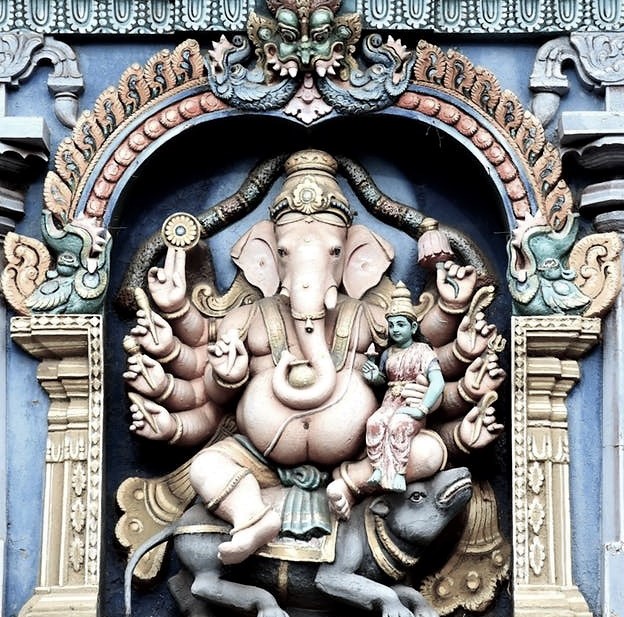- Special FeaturesFoundation YearIts construction is generally attributed to the 8th century Rashtrakuta king Krishna I in 756-773 CE.Sthala TreeTheerthamRathamArchitectureOther Speciality
- Sthala Puran
The Kailasnath temple is one of the largest rock-cut ancient Hindu temples located in Ellora. A megalith carved out of one single rock, it is considered one of the most remarkable cave temples in India because of its size, architecture and sculptural treatment.
Its construction is generally attributed to the 8th century Rashtrakuta king Krishna I in 756-773 CE. The temple architecture shows traces of Pallava and Chalukya styles.
The Kailasnath Temple is notable for its vertical excavation—carvers started at the top of the original rock and excavated downward. The traditional methods were rigidly followed by the master architect which could not have been achieved by excavating from the front.
The entrance to the temple courtyard features a low gopuram. Most of the deities at the left of the entrance are Shaivaite while on the right hand side, the deities are Vaishnavaites .
The arcades are punctuated by huge sculpted panels, and alcoves containing enormous sculptures of a variety of deities. Originally, flying bridges of stone connected these galleries to central temple structures, but these have fallen.
- Architecture
The Kailasa temple architecture is different from the earlier style prevalent in the Deccan region. As stated above, it appears to be based on the Virupaksha Temple at Pattadakal and the Kailasa temple at Kanchi, but it is not an exact imitation of these two temples. The southern influence on the temple architecture can be attributed to the involvement of Chalukya and Pallava artists in its construction. The indigenous Deccan artisans appear to have played a subordinate role in the temple's construction.
The entrance to the temple courtyard features a low gopuram. Most of the deities at the left of the entrance are Shaivaite (affiliated with Shiva) while on the right hand side the deities are Vaishnavaites (affiliated with Vishnu). A two-storeyed gateway opens to reveal a U-shaped courtyard. The dimensions of the courtyard are 82 m x 46 m at the base. The courtyard is edged by a columned arcade three stories high. The arcades are punctuated by huge sculpted panels, and alcoves containing enormous sculptures of a variety of deities. Originally flying bridges of stone connected these galleries to central temple structures, but these have fallen. Some of the most famous sculptures are Shiva the ascetic, Shiva the dancer, Shiva being warned by Parvati about the demon Ravana, and river goddess.
A two-storied gateway opens to reveal a U-shaped courtyard. The dimensions of the courtyard are 82 m x 46 m at the base. The courtyard is edged by a columned arcade three stories high.
- Alankar of Deity
- Prayers and BenefitsSpecial Vratas and PrayersOfferings to DeityStotras and Mantras
- FestivalsMarchEllora festival is the festival of classical dance and music organised under the backdrop of the Ellora caves. This festival, which is organised by Maharashtra Tourism Development Corporation (MTDC) in the month of March showcases the best talents from across the country in the field of classical music and dance.
- Sodasha Upcharas
- Prasadhas
- Social ActivitiesAnnadhanMarriageEar BoringHead ShaveDanaasEducation FacilitiesSocial DrivesOther Activities
- Arjita Seva
- Tags

